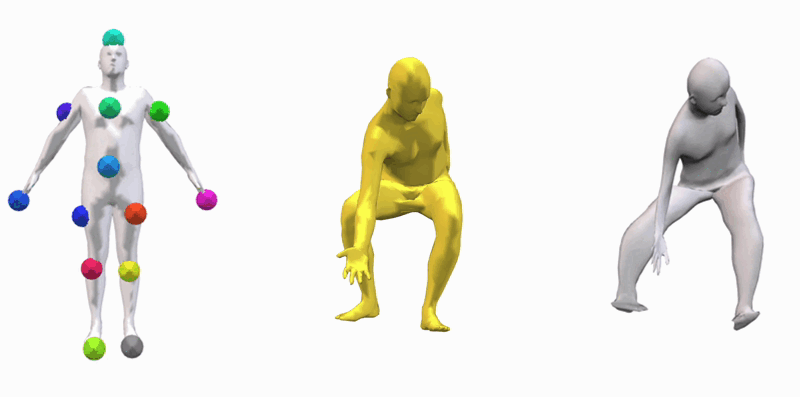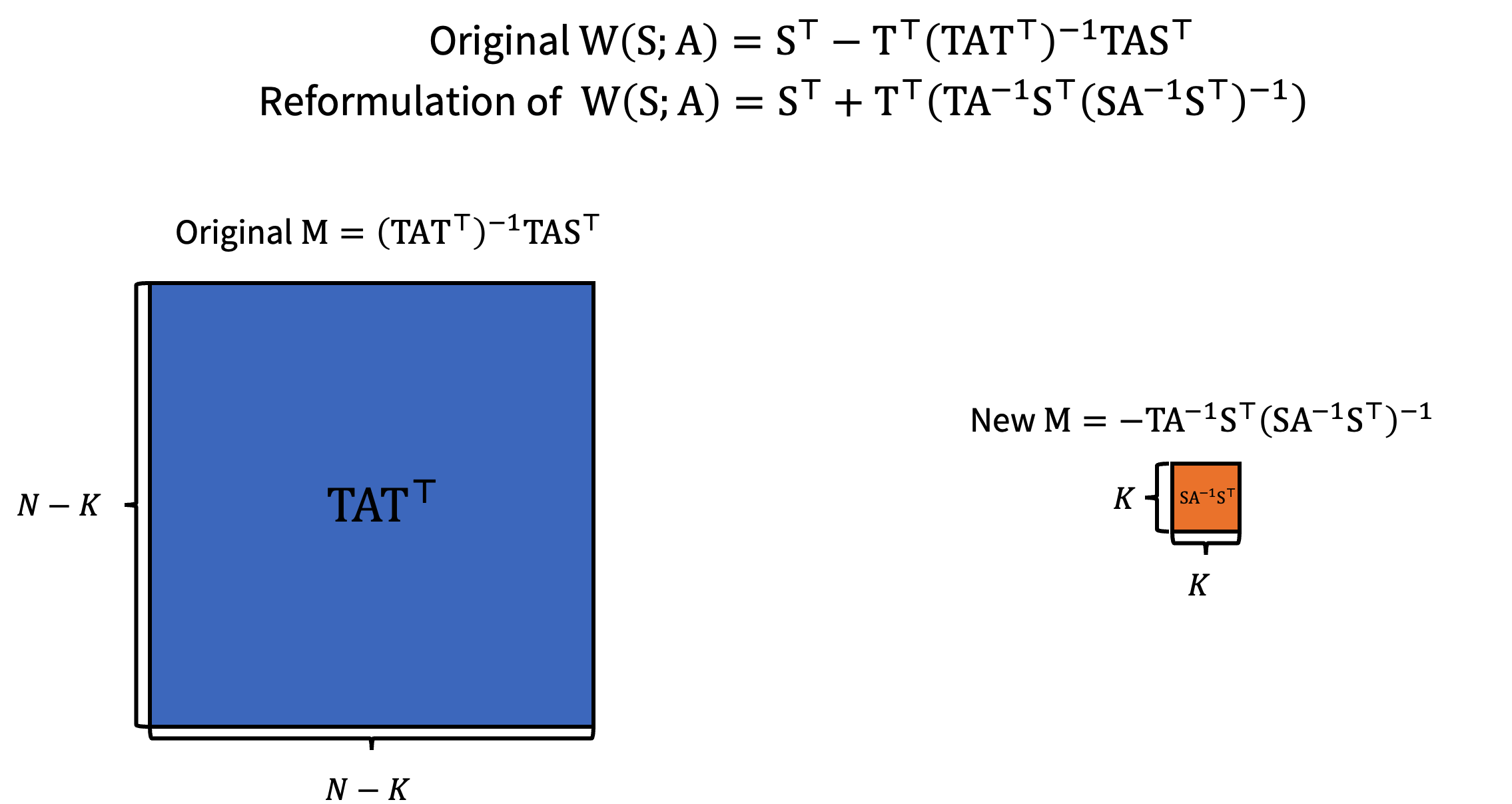OptCtrlPoints iteratively refines a set of control points starting from an initial configuration.
First, establish $K$ partitions of the mesh by conducting a nearest neighbor mapping of all vertices to seed points, using the distance over the volume mesh graph as a measure of proximity.
In the first stage, we determine the partition to which the $k_{th}$ control point will move.
We select the one of the sampled vertices that provides the minimum sum of distances between the template mesh and
all the target shapes after deformation when substituting the current $k_{th}$ control point.
By finding the vertex with the minimum sum of fitting distances, we identify the corresponding partitioned region for further exploration.
After first stage, we have the best partition $l$ among $K$ partitions. The time complexity of this first stage is $O(K^2)$.
In the second stage, within the selected region $l$, we find the best vertex, similar to the first stage.
We calculate the fitting error when substituting the current $k_{th}$ control point and select the one that minimizes the fitting error.
The vertex selected during this step becomes the new $k_{th}$ control point for the subsequent iteration.
Assuming an even partitioning of the template mesh with an equal number of vertices in each region,
the average time complexity of this second stage is $O(N)$.
Therefore, the whole time complexity of OptCtrlPoints is $O(N+K^2)$. Our algorithm significantly reduces the computation time
compared to the exhaustive search complexity of $O(N^K)$.




